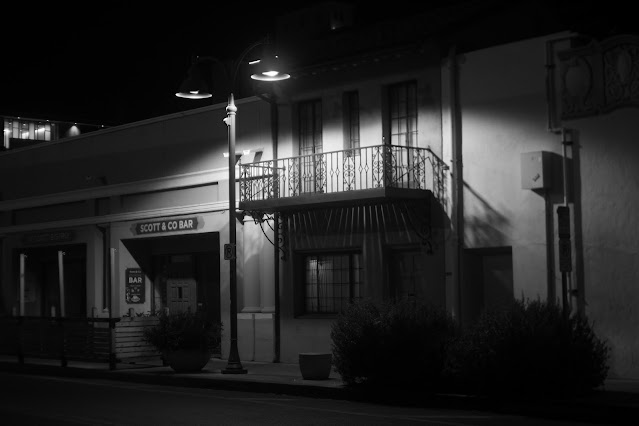I found this very good condition 1979-vintage SOLIGOR 28mm f2.8 (SN 4793243) lens at a thrift store ($8) Paired it with my Samsung NX1 digital camera using a M42-to-NX adapter, set the camera to manual and headed-out to do some street photography downtown Phoenix about 1-hour before sunset. All images straight from camera sensor. All in-camera effects off and no 'post' manipulation.
First photo I call the new look of Phoenix. Wow! Right from the first image, this lens produces images with subtle color tones that are very pleasing to the eye.
CLICK ON ANY IMAGE TO ENLARGE
Settings: f11, ISO-200, EV0, 1/125s
So what's this lens's story?
LENS SPECIFICATIONS
Name on Lens: Soligor 28mm F/2.8 Wide-Auto MC Lens
Manufacturer: Sun Optical Co.
Mount: M42
Aperture: f2.8 - f22
Filter diameter: 58mm
Material: Metal
Focus ring: 270 degrees rotational throw, moderately firm and smooth
Aperture ring: 1/2 stops, except full stops at F2.8 and F16, F22
Serial number decode:
First number is the Manufacturer (4 = SUN, Sun Optical Co. Ltd)
Second and third numbers are the decade and year (in this case 79 or 1979).
ABOUT SUN OPTICAL
In the 1950s or 1960s, the company was using the English name Sun Optical Co., an independent Japanese lens maker wbased in the city of Ichikawa (in the Chiba Prefecture, at the East of Tokyo).
The company began as Kajiro Kōgaku Kenkyūjo in 1939 selling lenses under the K.O.L name and then renamed to Gojō Kōki in 1941.
The company ended in 1945 but was soon revived as Sun Kōki, selling lenses under the Sun name with "Sun Opt" or "Sun Optical" often appearing on lenses. Sun made many lenses under their own name as well as producing products under contract for other companies such as Soligor.
In the late 70's or possibly early 80's the company became 'Gotō Sun' and continued to sell lenses until some time in the late 80's when they appear to have been absorbed by Goyō Kōgaku Shōji also know as Goyo Optical.
I photograph the changing urban landscape here in Phoenix. In the photo below, I like how this lens along with the camera produce a subtle (low contrast) shade, then transition to bright light.
Settings: f8/11, ISO-100, EV0, 1/125s
Straight out of camera - This Soligor lens produces an eye-pleasing texture with rich yet subtle colors.
Settings: f5.6, ISO-100, EV0, 1/125s
A common scene, people using the murals, architecture and the general urban landscape as a backdrop for photographs.
Settings: f8, ISO-100, EV0, 1/125s
New clubs, bars and restaurants to accommodate university students seasonal/event visitors and a growing urban population, shape the downtown culture
Settings: f8/11, ISO-100, EV0, 1/125s
Settings: f8/11, ISO-100, EV0, 1/125s
Alleys are an integral part of an urban landscape and a contributing factor of a city's character. For some a short-cut, others a place to take a break from the main street
Settings: f8, ISO-100, EV0, 1/125s
Settings: f5.6, ISO-100, EV0, 1/125s
Stopped-down the aperture to the lens's minimum of f2.8. I wanted to see the len's bokeh effect on far away objects. For the photograph below, the background bokeh is pleasantly blurred very fine.
Settings: f2.8, ISO-100, EV0, 1/1000s
New high-rise apartments rise from empty lots and economically obsolescent properties that are demolished.
Settings: f4/5.6, ISO-100, EV0, 1/125s
Settings: f5.6, ISO-100, EV0, 1/125s
Settings: f5.6/f8, ISO-400, EV0, 1/160s
Construction Cranes dominate the landscape as federally legislated 'Opportunity Zones' provide a tax free shelter for wealthy investors through real estate investment funds.
Settings: f16, ISO-400, EV0, 1/160s

















.JPG)
.JPG)
.JPG)
.JPG)
.JPG)
.JPG)
.JPG)
.JPG)
.JPG)
.JPG)
.JPG)
.JPG)


.JPG)
.JPG)
.JPG)
.JPG)
.JPG)
.JPG)
.JPG)
.JPG)
.JPG)
.JPG)
.JPG)
.JPG)























